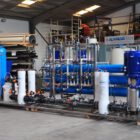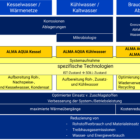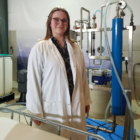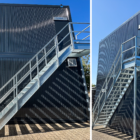A pumping station is a central technical facility that is used in the industrial water and wastewater treatment to pump water, waste water or other liquids over height differences or to transport them along a pipe system. Pumping stations play an indispensable role in process water treatment, wastewater disposal, cooling water circuits and other water technology applications.
Table of contents
Definition and basic function
Pumping stations are used to transport liquids from a lower position to a higher one or to ensure the flow over longer distances and against friction losses in pipelines. They are specially designed for the type of medium, the required delivery heads and volumes as well as the process requirements.
Typical areas of application:
- Industrial wastewater treatment:
- Conveying raw or pre-treatment wastewater to purification stages (e.g. biological stages, flotation plants, CP plants).
- Water supply:
- Transportation of drinking or process water from wells or reservoirs to consumers.
- Cooling water systems:
- Ensuring the flow of water in closed circuits or open cooling systems.
- Rainwater and combined sewer systems:
- Drainage of surface water, especially during heavy rainfall events.
- Recovery systems:
- Transport of treated water or concentrates in recycling processes.
Technical components of a pumping station
A pumping station consists of several technical components that work together to ensure efficient operation. The selection and dimensioning of the individual elements depends on the specific requirements of the process.
1. pumps
The pump is the heart of a pumping station. Different pump types are used depending on the medium, delivery head and flow rate:
- Centrifugal pumps:
- Application: Transportation of clear or slightly contaminated liquids.
- Advantages: High flow rates, low maintenance requirements.
- Positive displacement pumps (e.g. screw, piston and diaphragm pumps):
- Application: Highly viscous or abrasive media.
- Advantages: Precise dosing, high pressure stability.
- Submersible pumps:
- Application: Wastewater with solids content.
- Advantages: Space-saving, robust against dirt.
2. piping systems
- Material: Depending on the chemical and physical properties of the medium (e.g. PVC, PE, stainless steel).
- Function: Transport of the medium from the pump station to the respective destinations.
3. control systems
Modern pumping stations are equipped with automated control systems to ensure efficiency and reliability:
- PLC control (programmable logic controller):
- Monitoring of flow, pressure, fill levels and operating states.
- Remote monitoring:
- Use of sensors and IoT technologies for real-time monitoring and remote control.
4. level sensors and switching systems
- Fill level sensors control the operation of the pumps based on the fill level in the feed or collection tanks.
- Float switches or ultrasonic sensors are frequently used.
5. non-return valves
- Prevent the return flow of medium when the pumps are at a standstill.
6. ventilation and degassing
- Prevents the formation of air bubbles, which could impair the efficiency of the pump.
7. energy supply
- Fail-safe power supply, often supplemented by emergency power generators to ensure operation in the event of power failures.
How a pumping station works
The operation of a pumping station comprises several stages:
- Inflow:
- The medium flows into the pump station by gravity or via an upstream feed pump.
- Fill level monitoring:
- Sensors continuously measure the fill level and control the pumps accordingly.
- Promotion:
- The pump generates the necessary pressure to transport the medium through the pipes.
- Distribution:
- The medium is conveyed to the desired destinations via main or secondary lines.
- Regulation and monitoring:
- Pressure, flow and temperature parameters are continuously monitored to ensure stable operation.
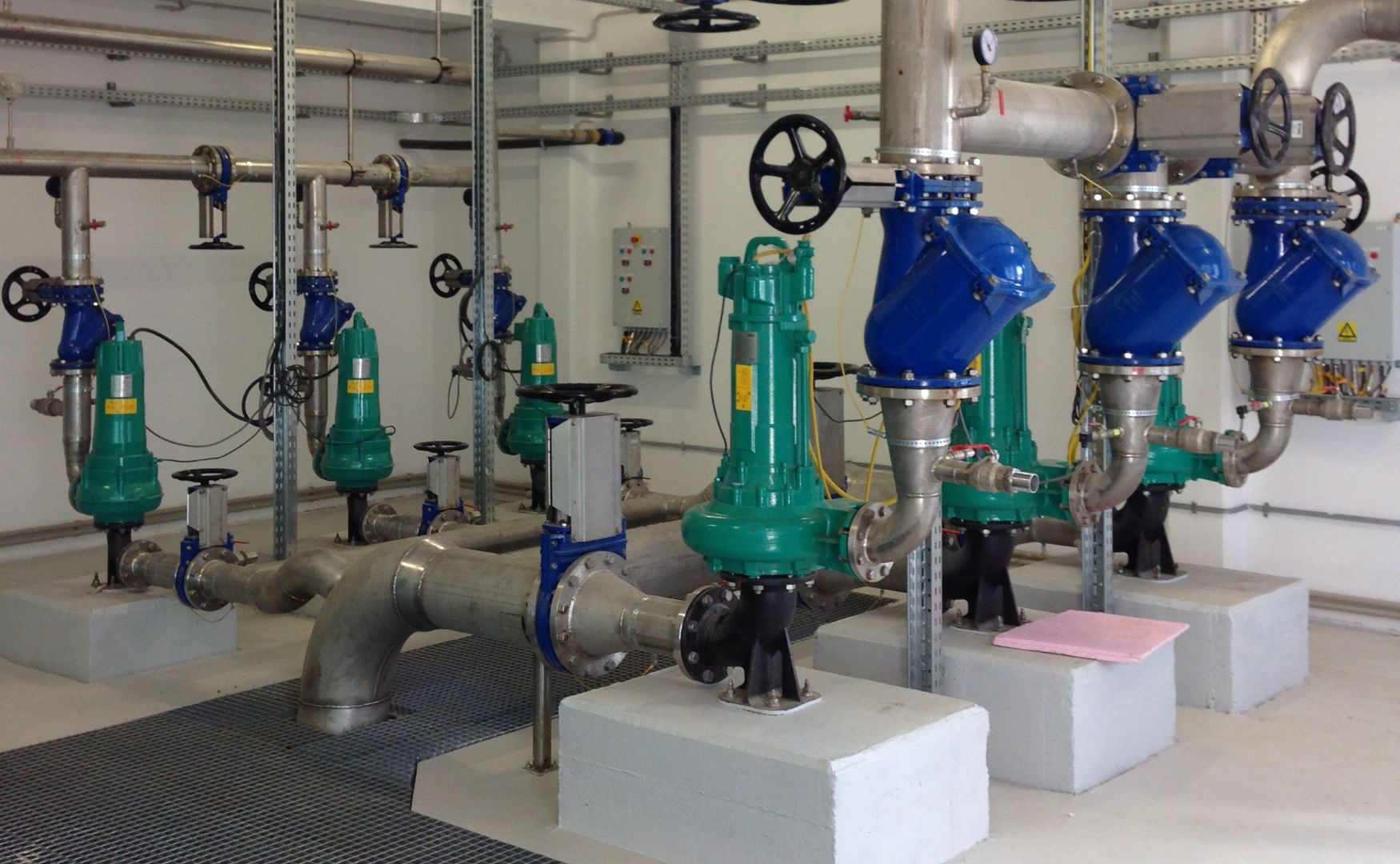
Photo: Pumping station with dry-installed pumps from ALMAWATECH
Maintenance and inspection
Regular maintenance is essential to ensure the functionality of the pumping station:
- Visual inspection:
- Checking seals, hoses and valves for leaks.
- Pump maintenance:
- Cleaning the pumps and replacing worn parts.
- Sensor and control systems:
- Calibration of the level sensors and inspection of the control systems.
- Energy consumption analysis:
- Checking the energy consumption to detect inefficient operating states.
Conclusion
A pumping station is an indispensable component of modern water and wastewater treatment systems. Through the targeted use of efficient technologies, robust materials and intelligent control systems, pumping stations can be operated reliably and economically. Their adaptability to different media and process requirements makes them a key factor in ensuring a sustainable and efficient water infrastructure.
For further information on our products, please feel free to contact us at any time!




